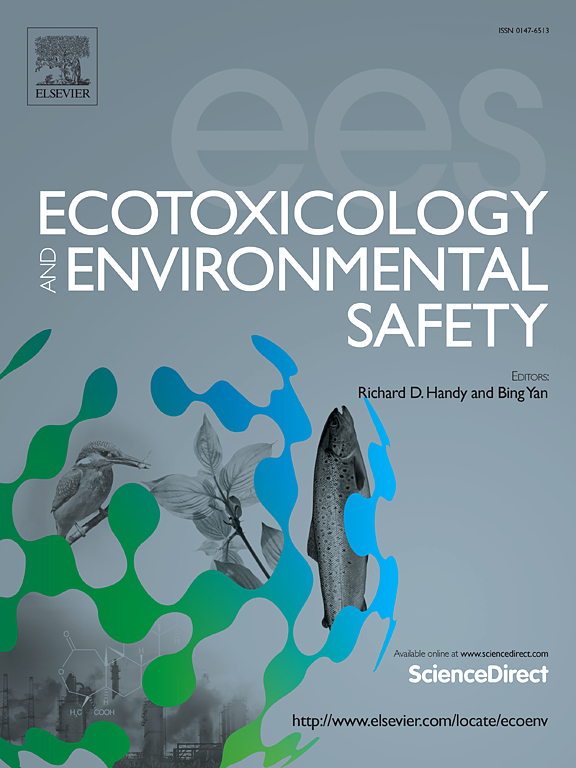Associations of exposure to individual polyfluoroalkyl substances and their mixtures with vitamin D biomarkers in postmenopausal women
IF 6.2
2区 环境科学与生态学
Q1 ENVIRONMENTAL SCIENCES
引用次数: 0
Abstract
The potential impact of polyfluoroalkyl substances (PFAS) on vitamin D status in postmenopausal women remains unexplored. This study examined the effects of individual PFAS and their combined exposures on vitamin D biomarkers among 2114 postmenopausal women utilizing data from the National Health and Nutrition Examination Survey (NHANES) spanning 2003–2018. The serum levels of four PFAS compounds, including perfluorooctanoic acid (PFOA), perfluorohexane sulfonic acid (PFHxS), perfluorooctane sulfonic acid (PFOS), and perfluorononanoic acid (PFNA), were assessed alongside the 25-hydroxyvitamin D [25(OH)D] level. Our findings indicated that elevated log-transformed PFAS concentrations were significantly associated with reduced 25(OH)D levels (βPFOS: −15.969, 95 % CI: −19.154, −12.785; βPFOA: −17.288, 95 % CI: −22.446, −12.131; βPFNA: −8.510, 95 % CI: −12.148, −4.871; βPFHxS: −4.056, 95 % CI: −7.003, −1.110) and increased odds of vitamin D deficiency (ORPFOS: 2.495, 95 % CI: 1.685, 3.694; ORPFOA: 3.146, 95 % CI: 1.823, 5.429; ORPFNA: 1.906, 95 % CI: 1.357, 2.677; ORPFHxS: 1.480, 95 % CI: 1.109, 1.976). These associations were modified by race, the family income![]() poverty ratio and the survey cycle. Notably, non-Hispanic White individuals presented a stronger inverse association between PFOS exposure and 25(OH)D levels. Bayesian kernel machine regression and weighted quantile sum analyses demonstrated that the effects of exposure to mixtures of the four studied PFAS were consistent with the effects of exposure to individual PFAS. These findings indicate that exposure to individual PFAS, particularly PFOA and PFOS, and their four mixtures may adversely affect serum 25(OH)D concentrations in postmenopausal women, underscoring the need for further investigation into the potential impact of PFAS on vitamin D status in this population.
poverty ratio and the survey cycle. Notably, non-Hispanic White individuals presented a stronger inverse association between PFOS exposure and 25(OH)D levels. Bayesian kernel machine regression and weighted quantile sum analyses demonstrated that the effects of exposure to mixtures of the four studied PFAS were consistent with the effects of exposure to individual PFAS. These findings indicate that exposure to individual PFAS, particularly PFOA and PFOS, and their four mixtures may adversely affect serum 25(OH)D concentrations in postmenopausal women, underscoring the need for further investigation into the potential impact of PFAS on vitamin D status in this population.
求助全文
约1分钟内获得全文
求助全文
来源期刊
CiteScore
12.10
自引率
5.90%
发文量
1234
审稿时长
88 days
期刊介绍:
Ecotoxicology and Environmental Safety is a multi-disciplinary journal that focuses on understanding the exposure and effects of environmental contamination on organisms including human health. The scope of the journal covers three main themes. The topics within these themes, indicated below, include (but are not limited to) the following: Ecotoxicology、Environmental Chemistry、Environmental Safety etc.

 求助内容:
求助内容: 应助结果提醒方式:
应助结果提醒方式:


